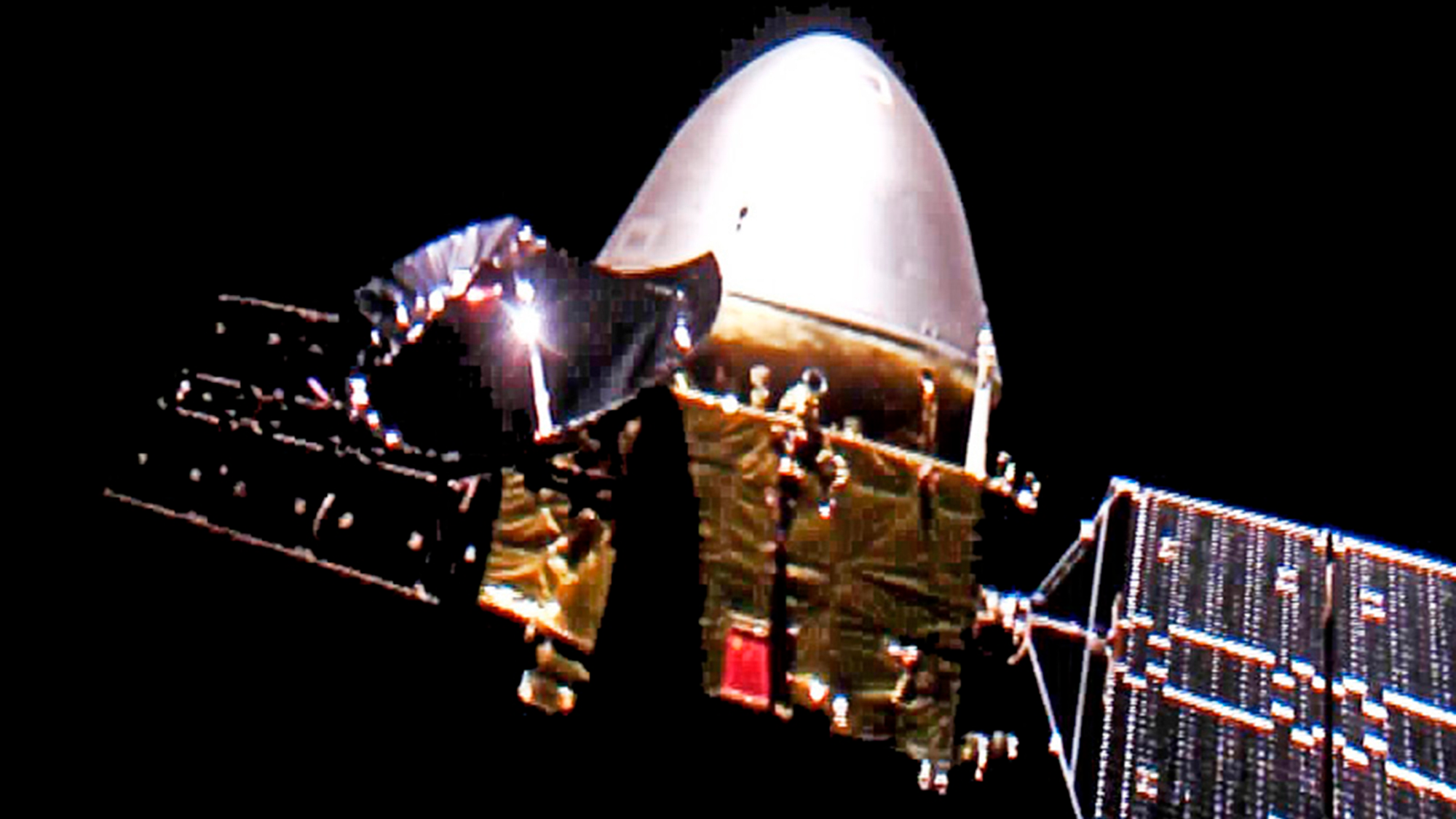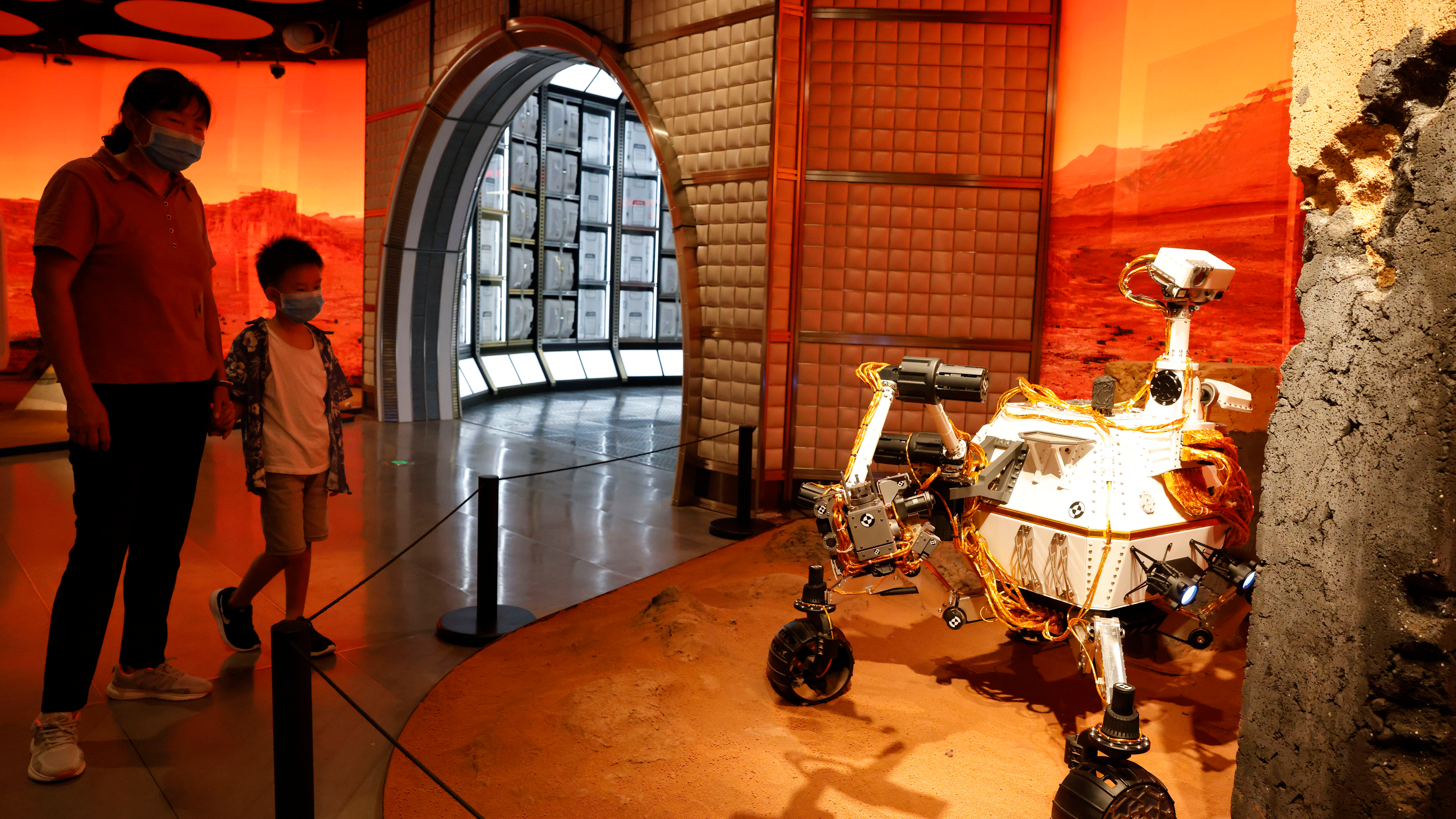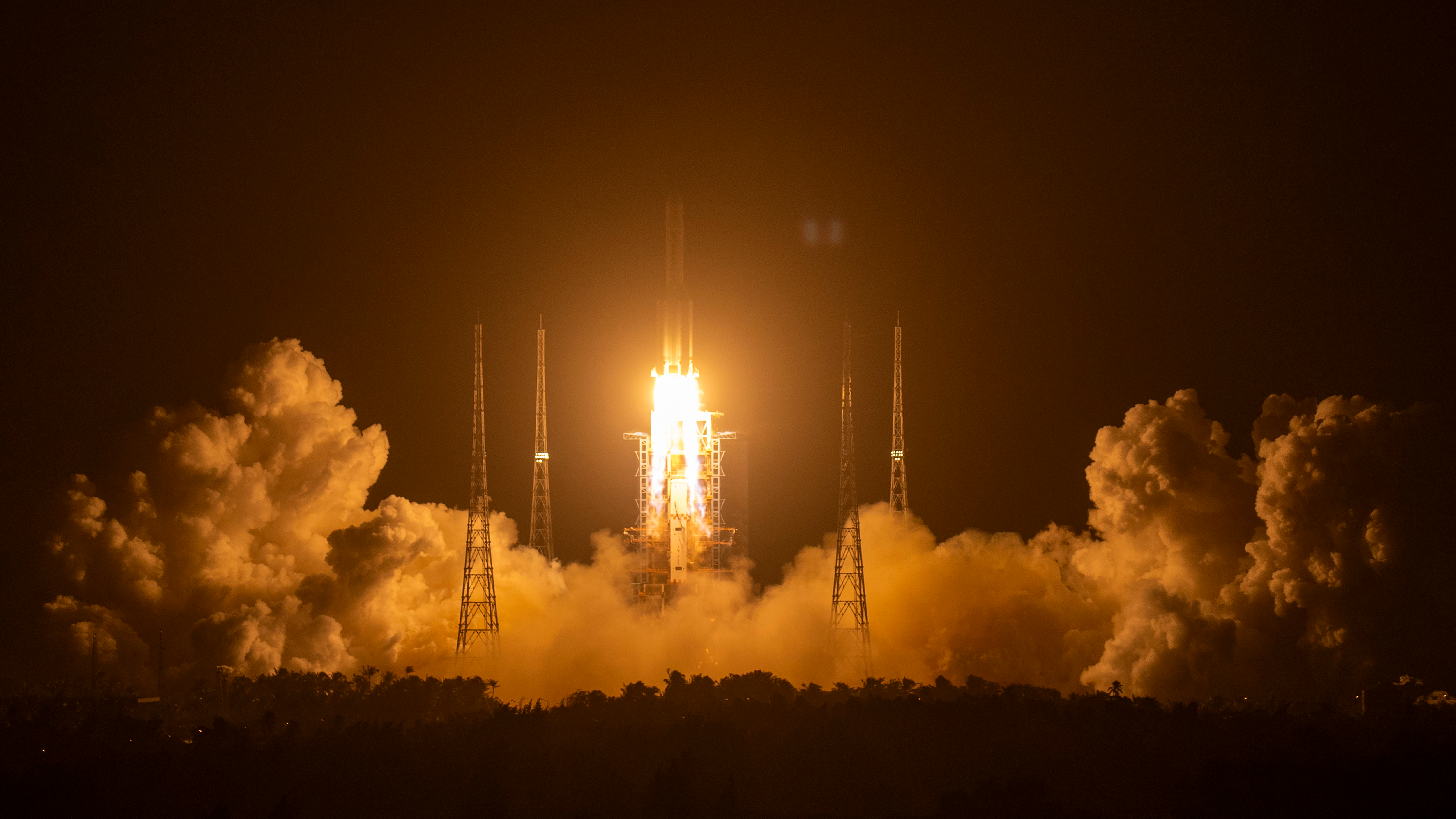04:17

China's Tianwen-1 spacecraft is one step closer to exploring Mars – it's safely orbiting the "Red Planet" and preparations are being made to send the lander to the surface.
Under the current plan, the spacecraft will touch down in May. It's hoped the probe will help answer the most basic and important of all scientific questions: what are the origins of life?
James Head, professor of planetary geosciences at Brown University in the U.S., says Mars might be a "laboratory for the study of life."
Utopia Planitia, which may have once been an ocean in the northern hemisphere, has been selected as a landing site. Head says the mission is "really important for fundamental knowledge about, not just Mars, but also our own very origins."

This image made available by the China National Space Administration shows the Tianwen-1 probe en route to Mars. /CNSA via AP
This image made available by the China National Space Administration shows the Tianwen-1 probe en route to Mars. /CNSA via AP
China, the United Arab Emirates and the U.S. have all launched interplanetary missions.
The UAE's Hope spacecraft went into orbit on February 9, Tianwen-1 arrived a day later and NASA's Perseverance is scheduled to land on the Jezero Crater on February 18.
The timings aren't a coincidence. Head explains that, in order to intersect Mars, an ideal "launch window" only presents itself about every two years.

A model depicting a rover on Mars during an exhibition in Beijing. /AP/Ng Han Guan
A model depicting a rover on Mars during an exhibition in Beijing. /AP/Ng Han Guan
While all three countries are on independent missions, demonstrating national capabilities, they're also working for the "scientific community and not just for each country, but for the planet as a whole," says Head.
China's Tianwen-1 will explore the floor of an ancient ocean, UAE's Hope will investigate the atmosphere and the U.S.'s Perseverance will survey an old lake deposit.
"These are very complimentary," says Head. "Each one is an incredible opportunity in itself and together. So international and scientific cooperation is really exciting at a high level."

A Long March-5 rocket carrying the Chang'e 5 lunar mission lifts off at the Wenchang Space Launch Center in Wenchang in southern China's Hainan Province on November 24, 2020. /AP/Mark Schiefelbein
A Long March-5 rocket carrying the Chang'e 5 lunar mission lifts off at the Wenchang Space Launch Center in Wenchang in southern China's Hainan Province on November 24, 2020. /AP/Mark Schiefelbein
China set the stage for these voyages with the Chang'e-5 mission to the moon in December 2020.
The spacecraft, named after the Chinese moon goddess Chang'e, successfully went into lunar orbit, landed on the surface and collected lunar samples before rendezvousing with the orbiter, which then sent the soil and rocks back to Earth.
Head says these are "not only demonstrations of what we want to do for Mars – so China provided a dress rehearsal for everyone – but, it's also everything you want to do when you send humans to the moon."
According to Head, China plans to send astronauts to the moon in the not too distant future.

